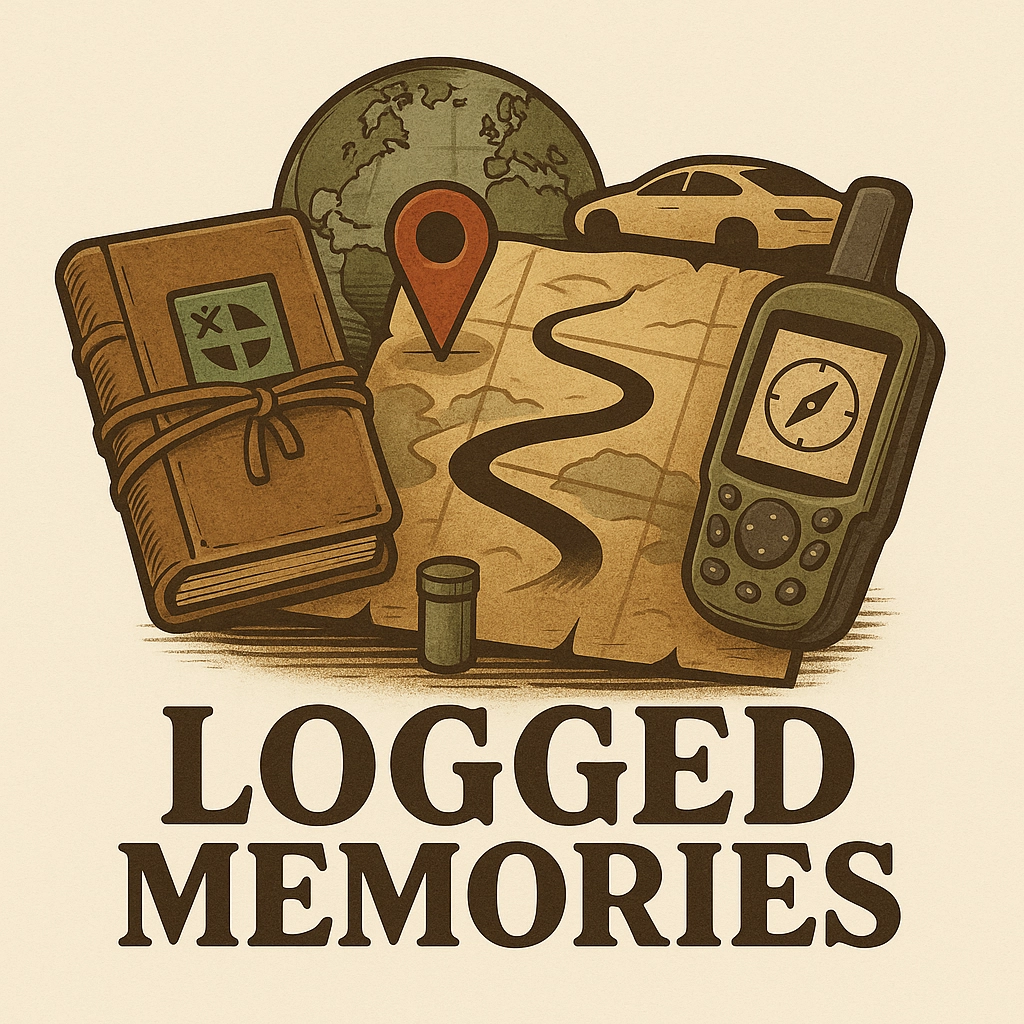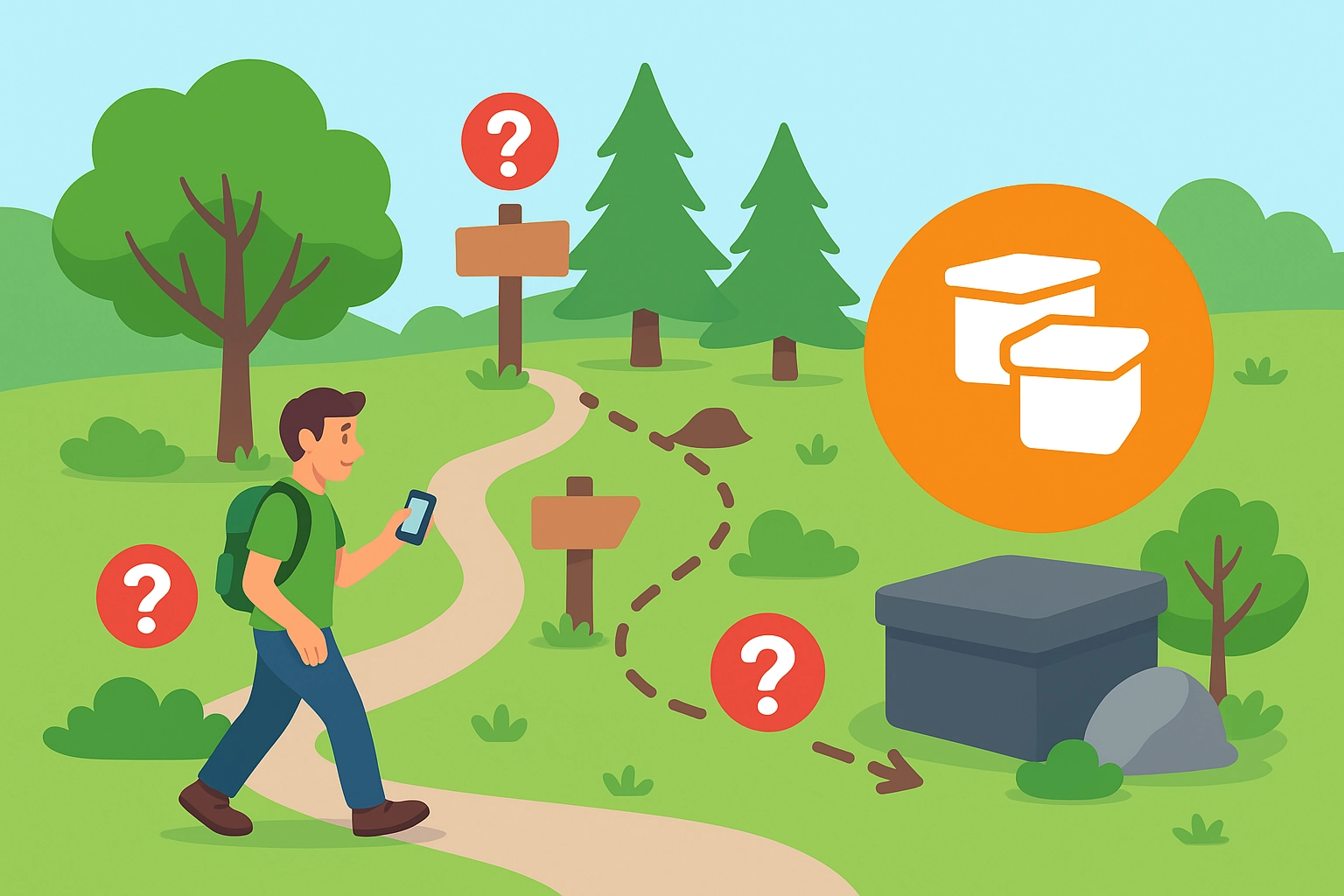A multi-cache is a geocache made up of several stages—sometimes as few as two, sometimes as many as ten. The adventure is spread across multiple waypoints. Each stage typically gives you a clue or coordinate that leads to the next. The final stage includes a physical container with a logbook, just like a traditional cache.
These caches encourage exploration and often involve puzzles, observation, or math. Some stages may involve reading plaques, counting objects, or solving clues on site.
👉 Tip for beginners: Look for multi-caches with a Difficulty rating of 1 or 2 for your first attempts. These are easier to follow and less likely to involve complex calculations.
I still remember my first multi-cache. It took me on a winding walk through my neighborhood, stopping by landmarks I had passed dozens of times without noticing. That experience made me appreciate how multi-caches turn the ordinary into the extraordinary.
My favorite ones were simple multi-caches in Harstad. You’d show up at the coordinates, use a flashlight, and scan the area. When you spotted a reflective marker shining back at you, there was the logbook!
The multi-caches I appreciate the least are the ones with 6–7 stages, where you have to collect hints, convert them into letters, and then solve a complex formula to get the coordinates. One missing piece, and the entire calculation falls apart.
Common elements include:
🧭 A starting coordinate and one or more intermediate stages
🧩 Clues or tasks at each stage
📒 A final logbook to sign
The first set of coordinates listed on the cache page usually leads to a physical sign, object, or small container. There, you might gather:
Letters or numbers to plug into a formula
GPS coordinates for the next waypoint
Clues that reveal a hidden pattern or direction
Sometimes the intermediate stages are virtual (i.e., you just gather info), and sometimes they include physical containers with the next coordinates inside.
Multi-caches are popular for urban walks, historic tours, nature trails, and creative storytelling.
Apps and Tools
Both the official Geocaching app and Cachly (iOS) support multi-cache navigation. You can:
Record waypoints manually
Use Cachetur.no to preplan all stages and driving routes
Save offline data and add personal notes to each stage
These tools help keep track of each leg of your journey, especially in complex or long multi-caches.
Stats and Popularity
📊 As of 2025:
Multi-caches make up about 5–8% of all active geocaches globally
Some regions are famous for multi-caches with elaborate puzzles or scenic routes
They’re especially popular in Europe, where many caches integrate local history
Pros of Multi-Caches
✅ More immersive than single-stage caches
✅ Often lead to a great final location
✅ Perfect for walks, hikes, and tours
✅ Can combine storytelling, exploration, and physical challenge
Cons of Multi-Caches
⚠️ More time-consuming than traditional caches
⚠️ A missing intermediate stage can ruin the whole experience
⚠️ Less ideal for quick stops or power trails
⚠️ Not always beginner-friendly without experience or preparation
Summary
The multi-cache offers a deeper geocaching experience. It’s not just about finding a container—it’s about following a trail of clues, solving puzzles, and seeing your surroundings in a new way. For geocachers who enjoy a bit of mystery, strategy, and movement, the multi-cache is a perfect next step.
Ready to explore beyond the first waypoint? Then multi-caching is your next adventure!
Just getting started with Geocaching? You're in the right place! This article is part of our beginner series — check out the full collection here.





Comments